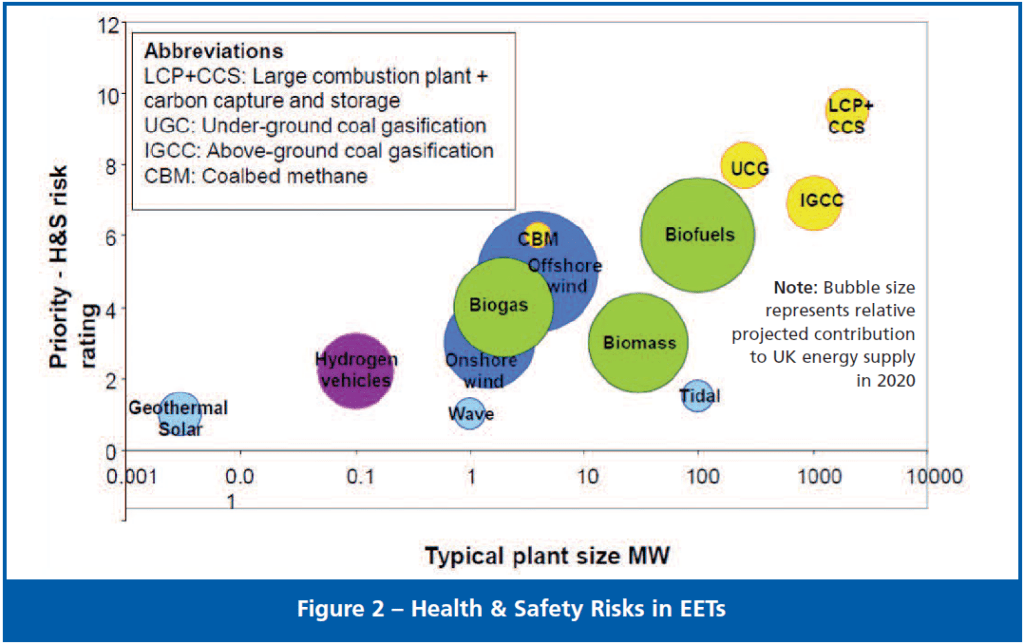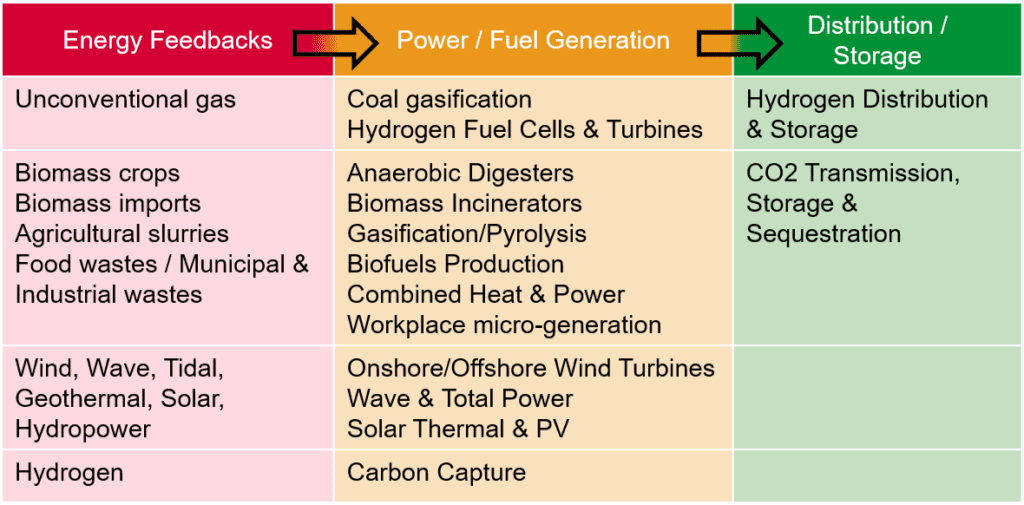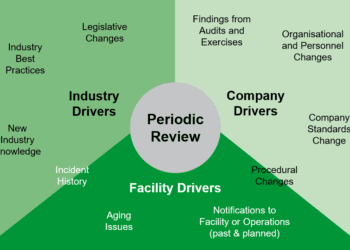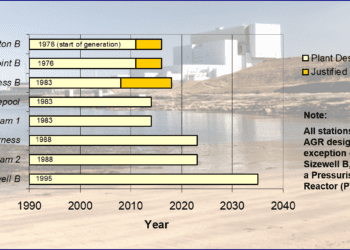Emerging energy technologies – can they be implemented safely?
Concerns over greenhouse gas emissions, energy security and escalating costs have combined to catalyse a move towards a new energy economy. In the future, the technologies meeting our electricity, heating and fuel needs must deliver against three key criteria: sustainability, security and affordability. Over the next decade and beyond, a wide range of emerging energy technologies (EETs) are likely to play an important role in reshaping the energy economy (see Figure 1).
Figure 1 – Overview of Emerging Energy Technologies [Ref.1]
MANAGING RISK
EETs are not without risk. They all present occupational hazards, most present hazards to the public and some will present major hazards – the potential for multiple fatalities and/or widespread damage to property and the environment as a result of a single incident. Figure 2 presents an overview of the UK Health & Safety Executive’s view of the risks of key EETs [Ref. 1].
The contribution these EETs make to the ultimate success of this new energy economy will depend on their ability to be harnessed safely.
Risk management principles and techniques honed over many years in other more mature industries can be applied. However, this is not always straightforward. By their very nature, EETs are novel and hence not necessarily well understood. Uncertainty may surround the nature and extent of hazards and limited, if any, safety data may be available to support risk assessment. Research and testing is still ongoing and many EETs have yet to be proven on a serious scale anywhere in the world.

WIDER ISSUES
Possibly the greatest threats to the safe implementation of EETs lie not in the engineering, but in the generic symptoms of this new energy economy:
- In such a fast moving, competitive environment there is a significant risk that experience and best practice is not shared.
- The rapid expansion of EETs is likely to present a significant skills gap.
- New companies may struggle to establish an adequate health and safety culture quickly.
- The trend for such projects to be funded via complex consortia or ‘virtual companies’ can mean ambiguous health and safety ownership.
- Commercial pressure to be ‘first to market’ may result in health and safety issues being deferred to a later stage, foreclosing on options to reduce risk.
MEETING THE CHALLENGE
These are big challenges, which will need researchers, designers, and financiers to adopt a long-term focus on achieving the societal benefits of a reformed energy economy. This will entail collaborating effectively, sharing knowledge and experience and lesson learning. Moreover, a pragmatic yet robust risk management process must somehow be embedded into the entire life-cycle. Only time will tell whether industry can deliver on this vision.
References
1. Offshore Wind Logistics, January 2011, A regulatory update from the HSE’s EETs programme
This article first appeared in RISKworld Issue 21









